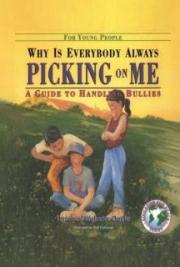Table of Contents
Introduction ................................................................ 3
Singular Nouns – Part I .............................................. 4
Singular Nouns – Part II ............................................. 6
Singular Nouns – Part III ............................................ 7
Plural Nouns .............................................................. 9 Definite Article – Part I ................................................11 Definite Article – Part II ...............................................13 Indefinite Article ..........................................................14 Cardinal Numbers 1-10 .............................................. 16 Cardinal Numbers 11-20 ............................................ 18 Cardinal Numbers 21-99 ............................................ 19 Adjectives – Part I ...................................................... 21 Adjectives – Part II ..................................................... 23 There Is/There Are ..................................................... 24 25 Common Words – Part I ........................................ 26 25 Common Words – Part II ....................................... 27 Accent ......................................................................... 28 Personal Pronouns ..................................................... 30 Regular –ar Verbs ....................................................... 33 Regular –er Verbs ....................................................... 35 Regular –ir Verbs ........................................................ 37 Using Verbs ................................................................. 38 Common –ar Verbs ...................................................... 40 Common –er Verbs ...................................................... 41 Common –ir Verbs ....................................................... 42
Introduction
Are you planning to visit Spain?
Why not learn a little of the language before you come?
A basic grounding in Castilian Spanish (in other words, the Spanish spoken in Spain) will help you:
enter the real Spain
get to know the locals better enjoy its rich culture
Learning Spanish need not be difficult, boring, or time-consuming.
Just a quick 10 minutes a day with this mini-ebook will help you get to grips with the language.
Don´t spend hours each day watching television programmes that bore you!
Enjoy yourself - with family and friends - learning a little Spanish!
You’ll surely be well-rewarded for your efforts when that holiday comes!
Singular Nouns – Part I
What is a noun?
A noun is a word used to denote a:
person place
thing
All Spanish nouns are either masculine or feminine.
Usually - although not always - masculine nouns end with
–o and feminine nouns end with
–a
Examples of masculine nouns which end in
–o would be:
vaso ..........glass plato ......... plate cuchillo ..... knife libro .......... book
Examples of feminine nouns ending in
–a would be:
taza .......... cup mesa ........ table cuchara .... spoon cabeza ...... head Sometimes, with nouns relating to persons or animals, the –o or –a at the end will change, depending on whether it relates to male or female.
Some examples of this are:
gato .......... male cat gata .......... female cat
abuelo ...... grandfather abuela ...... grandmother
tío ............. uncle tía ............. aunt
chico ......... boy chica ......... girl
Singular Nouns – Part II
In Chapter 1, we said that Spanish nouns are either masculine or feminine, that nouns ending in –o tend to be masculine, whilst those ending in –a tend to be feminine.
There are, however, some exceptions to this rule.
Common examples of nouns ending in
–a which are masculine are:
clima .................... climate
día ........................ day
idioma ................... language mapa .................... map
planeta .................. planeta
poema ................... poem
problema ............... problem
programa ............... programme sistema .................. system
sofá ........................ sofa
telegrama ............... telegramme tema ....................... theme, subject
In the same way, some nouns which end in
–o are classed as being feminine, although there are not so many of them. Examples are:
mano ....................... hand radio ........................ radio
Singular Nouns – Part III
Unfortunately, not all Spanish nouns end in
–o or
–a.
1. Nouns ending in
–d and
–z tend to be feminine, as in:
edad .................... age paz ...................... peace
2. Nouns ending in
–ión tend to be feminine, as in:
canción ............... song religión ................ religion
3. Nouns ending in
–e tend to be masculine, as in:
aceite ................. oil diente ................. tooth
4. Nouns ending in
–n tend to be masculine, as in:
andén ................ pavement/sidewalk corazón .............. heart
5. Nouns ending in
–r tend to be masculine, as in:
azúcar ................ sugar lugar ................... place 6. Nouns ending in
–l tend to be masculine, as in:
ángel .................. angel hotel ................... hotel
7. Singular nouns ending in
–s tend to be masculine, as in:
autobús .............. bus interés ................ interest
Added to that, masculine nouns that end in a consonant often have a corresponding feminine form that ends in
–a:
profesor/a ................ teacher doctor/a ................... doctor
Plural Nouns
There are various rules to follow when making nouns into the plural.
1. Nouns which end in a
vowel just add
–s:
libro + s = libros (books)
casa + s = casas (houses) debate + s = debates (debates)
2. Nouns which end in a
consonant add
–es:
pared + es = paredes (walls)
profesor + es = profesores (teachers)
3. Nouns which end in
–ión drop the written accent and add
–es:
conversación + es - ´ = conversaciones (conversations) televisión + es - ´ = televisiones (televisions)
4. Nouns which end in
–z change the
z to c and add
–es:
luz .......... luces (lights) voz ......... voces (voices) 5. Nouns ending in –s and –x which do NOT have the spoken emphasis placed on the last syllable keep the same singular and plural:
lunes .......... Monday(s) tórax ........... thorax(es)
6. However, nouns ending in
–s which have the spoken emphasis placed on the last syllable follow the general rule and add
–es:
mes + es = meses (months) interés + es = intereses (interests)
Definite Article – Part I
What is the definite article?
In English, the definite article is the word “the”.
The
English definite article is
invariable.
In other words, it is the same regardless of whether the noun it introduces is masculine or feminine (although we do not really differentiate between masculine and feminine nouns in the English language), singular or plural.
On the other hand, the
Spanish definite article is
variable.
It is made to agree with the noun and therefore has four forms, depending on whether the noun it introduces is:
masculine singular feminine singular masculine plural feminine plural
The four forms of the Spanish definite article are as follows:
el is used for masculine singular nouns la is used for feminine singular nouns los is used for masculine plural nouns las is used for feminine plural nouns Examples of their use would be:
el niño ............... the boy la niña ............... the girl los niños ............ the boys las niñas ........... the girls
Definite Article – Part II
In Chapter 5, we learnt that the definite article in Spanish is variable, and agrees with the noun, depending on whether the latter is masculine, feminine, singular or plural.
There are, however, exceptions to this rule ...
With feminine nouns beginning with –a or –ha which have the spoken emphasis placed on the first syllable, the masculine definite article is used:
el agua ............... the water el hambre ........... the hunger This is - basically - because it sounds better.
Indefinite Article
What is the indefinite article?
The
indefinite article is used when
not referring to a specific thing.
The
definite article is used when you
are referring to a specific thing.
In English, the indefinite article can be:
a
an
some
Like the definite article, the
indefinite article is
variable and has four forms.
These are:
un ............... the masculine singular form una ............. the feminine singular form unos ........... the masculine plural form unas ............ the feminine plural form
Un and
una can mean
a, an or
one. Examples of the indefinite article in use are:
un niño .......... a boy/one boy una niña ......... a girl/one girl unos niños ...... some boys unas niñas ...... some girls
Unos niños could, in fact, be referring to a mixed group of boys and girls.
This is because, with mixed groups, as long as there is at least one male member, the
masculine plural noun is used.
Cardinal Numbers 1-10
You’ve already learnt how to refer to a noun using either the definite or indefinite article.
But what happens if you want to specify a number?
For this, you will need to know your
cardinal numbers.
The cardinal numbers one to ten are as follows:
1 - uno
2 - dos
3 - tres
4 - cuatro
5 - cinco
6 - seis
7 - siete
8 - ocho
9 - nueve
10 - diez
If you just look over the previous chapter on the Indefinite Article, you’ll realize that the number one changes from uno to un before a masculine noun and from uno to una before a feminine noun.
For example:
un niño .......... one boy una niña ........ one girl Use uno when counting generically, as in:
one, two, three, four, etc uno, dos, tres, cuatro, etc
Use
un or
una when counting specifically, as in:
one banana, one apple, etc un plátano, una manzana, etc Following on from the last chapter, the cardinal numbers eleven through to twenty are as follows:
11 – once
12 – doce
13 – trece
14 – catorce
15 – quince
16 – dieciséis
17 – diecisiete
18 – dieciocho
19 – diecinueve
20 – veinte
In Spanish, the numbers 16 through to 19 are actually contractions.
For example, the Spanish for 16 –
dieciséis – literally means
ten and six, but joined together, as shown below:
dieciséis = diecisiete = dieciocho = diecinueve = diez y seis diez y siete diez y ocho diez y nueve The cardinal numbers twenty-one to thirty are:
21 – veintiuno
22 – veintidós
23 – veintitrés
24 – veinticuatro
25 – veinticinco
26 – veintiséis
27 – veintisiete
28 – veintiocho
29 – veintinueve
30 – treinta
You’ll notice that, like the cardinal numbers 16 to 19, the numbers 21 to 29 are contractions of the Spanish for
twenty and one etc:
veintiuno = veinte y uno veintidós = veinte y dos, etc
Numbers between 40 and 100 are
not usually done as contractions but add
y uno ...
y dos etc.
40 – cuarenta
50 – cincuenta
60 – sesenta
70 – setenta
80 – ochenta
90 – noventa Consequently, the Spanish for sixty-two would be sesenta y dos.
Other examples are:
79 ...... setenta y nueve
86 ...... ochenta y seis
93 ...... noventa y tres
Adjectives – Part I
What is an adjective?
An adjective is a word used to describe or add information about a noun or pronoun, as in:
the
white cat
In Spanish, most adjectives are variable and change form depending on whether the word they describe is masculine, feminine, singular or plural, as in:
el gato blanco ............... the white (male) cat la gata blanca ............... the white (female) cat los gatos blancos .......... the white (male) cats las gatas blancas .......... the white (female) cats
Many Spanish adjectives end in
–o and, as we can see from the above example of
blanco (white), this type of adjective has four forms:
blanco ....... masculine/singular form blanca ....... feminine/singular form blancos ..... masculine/plural form blancas ..... feminine/plural form
Adjectives that end in
–e, however, do not change form for the masculine and feminine but remain the same for both:
el chico pobre .......... the poor boy la chica pobre .......... the poor girl However, they do change form from the singular to the plural by adding – s:
los chicos
pobres ....... the poor boys las chicas
pobres ....... the poor girls
Similarly, most adjectives which end in a consonant do not change form for the masculine and feminine, but they do change form for the plural by adding –es:
el hombre fiel .......... the faithful man la mujer fiel ............. the faithful woman los hombres fieles ... the faithful men las mujeres fieles .... the faithful women
Some adjectives of nationality which end in a consonant do not, however, follow this rule but add an
–a to the feminine forms:
el hombre español .......... the Spanish man la mujer española ........... the Spanish woman los hombres españoles ... the Spanish men las mujeres españolas .... the Spanish women
Adjectives which end in
–or, -án, ón and
–ín also have a feminine form:
el hombre hablador ............ the talkative man la mujer habladora ............. the talkative woman los hombres habladores ..... the talkative men las mujeres habladoras ...... the talkative women
Adjectives – Part II
You’ll have probably noticed from the previous chapter that, as a general rule, in Spanish the adjective comes after the word it describes – unlike English where it comes before.
However, adjectives which express
quantity (ie how much or how many) tend to be placed
before the noun, for example:
mucho trabajo .......... much work
poco dinero .............. little money
There are also occasions when a descriptive adjective can precede the noun, for example, when it refers to a quality which is inherent and usually taken for granted, as in:
la
blanca nieve .......... the
white snow
In Spanish, there are also just a few adjectives which have a different meaning depending on whether they are placed before or after the noun.
For example:
un hombre
pobre ... a poor man (in the sense of unfortunate) un
pobre hombre ... a poor man (in the sense of little money)
There Is/There Are
So far, you’ve learnt all about nouns, can describe them using adjectives, and know how to explain how many there are with the use of cardinal numbers.
Let’s now expand your ability to talk about nouns by using the Spanish for
there is and
there are.
This is very easy to do in Spanish, for there is just one word which can be used for either of these two expressions.
That word is: hay
(pronounced like the English word “eye”)
To recap, the word
hay has two meanings:
there is there are
For example:
Hay una chica bonita en la calle.
There is a pretty girl in the street.
Hay dos libros grandes en la mesa.
There are two big books on the table.
Hay can also be used in questions.
(By the way, the Spanish use two question marks – a reverse one at the start of the phrase/sentence plus a normal one at the end.)
¿Hay?
can mean two things: Is there?
Are there?
For example:
¿
Hay una chica bonita en la calle?
Is there a pretty girl in the street?
¿
Hay dos libros grandes en la mesa?
Are there two big books on the table?
Hay can also be used to answer questions: ¿
Hay una chica bonita en la calle?
Sí.
Sí hay. (Yes.
Yes there is.)
¿
Hay dos libros grandes en la mesa? No.
No hay. (No.
No there aren´t.)
So, depending on whether the answer is positive or negative, you just answer:
Sí hay. or
No hay. Simple, isn´t it?!
25 Common Words – Part I
Below, you’ll find twenty-five commonly-used words. a ............................. to/at
agua (el) ................. water
ahora ...................... now
año (el) ................... year
antes ...................... before/earlier
aquí ........................ here
bien ........................ well
buen (o) ................. good
cada ....................... each
comida (la) ............. food/meal
como ...................... as/like
¿Cómo? ................. How?
con ......................... with
corto .......................short
cosa (la) ................. thing
cuando ................... when
¿Cuándo? .............. When?
de .......................... of/from/by
después ................. after/later
día .......................... day
diferente ................. different
donde ..................... where
¿Dónde? ................ Where?
en ........................... in/on/into
entre ....................... between/among
25 Common Words – Part II
And, here you have twenty-five more! gente (la) ................... people
lugar (el) .................... place
mal (o) ....................... bad
más ............................ more
menos ........................ less
mismo ........................ same
mucho ........................ much/many (pl) muy ............................ very
no ............................... no, not
noche (la) ................... night
nombre (el) ................. name
nuevo .......................... new
número (el) .................. number o ................................... or
otro ............................... other/another pequeño ........................ small
pero ............................... but
por ................................. for/by/along porque ........................... because si .................................... if
sí (with accent) .............. yes
también ......................... also
tan ................................. so
viejo ............................... old
y ..................................... and
Accent
When speaking or reading Spanish words, how do we know which syllable of the word should be emphasized?
With the exception of words which end in
–mente, all Spanish words have just one syllable that is stressed or emphasized.
In words where there is no written accent, you can work out which syllable should be stressed by looking at the ending of the word:
1. Words which end in a consonant, EXCEPT
–n or
–s have the emphasis placed on the
last syllable. For example:
español ..... Spanish
espa
ñol (emphasis placed on last syllable)
2. Words which end in a
vowel, -n or
–s are stressed on the
penultimate syllable (ie last but one). For example:
diferente ..... different
difer
ente (emphasis placed on last-but-one syllable)
Occasionally, the above rules are not followed.
When this happens, the word is given an acute accent to show which syllable should be stressed. For example:
árbol .......... tree (
árbol)
número ...... number (
número) The written accent is also







